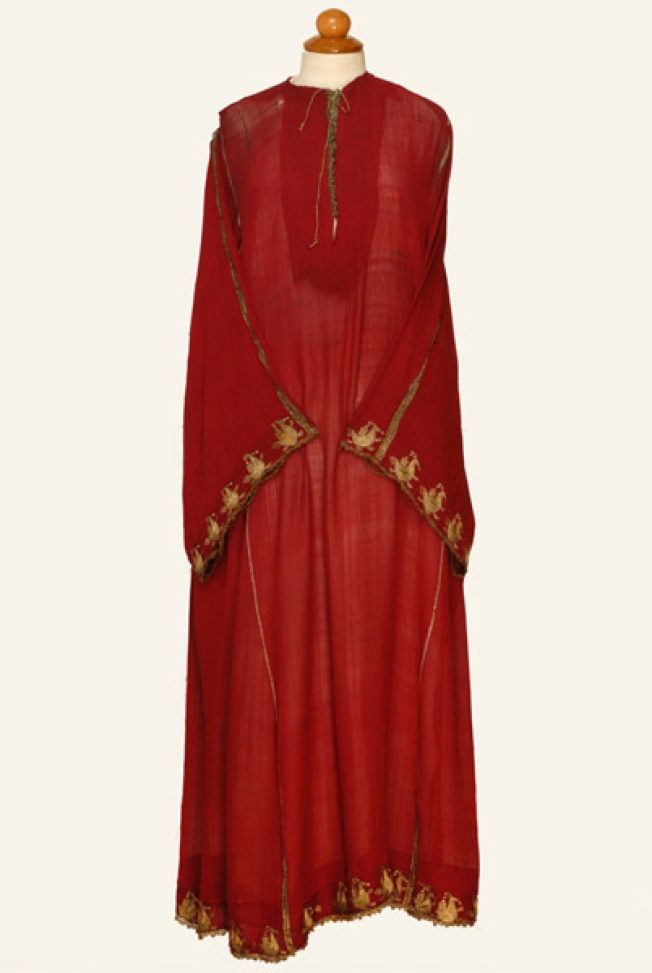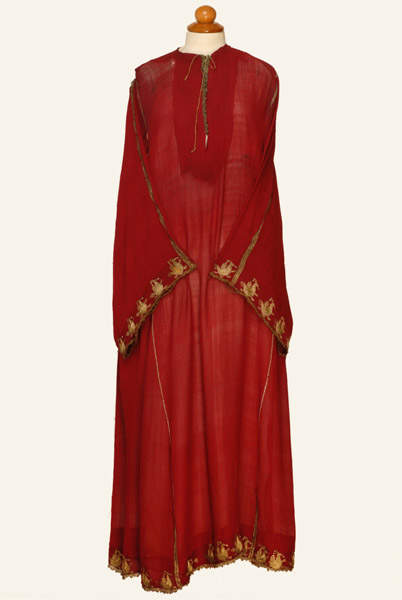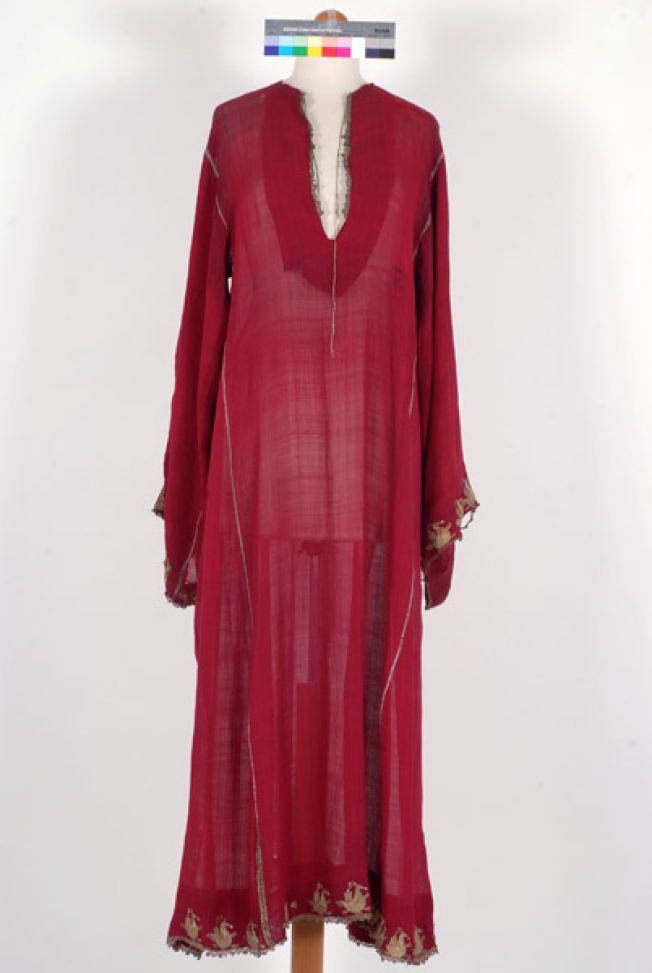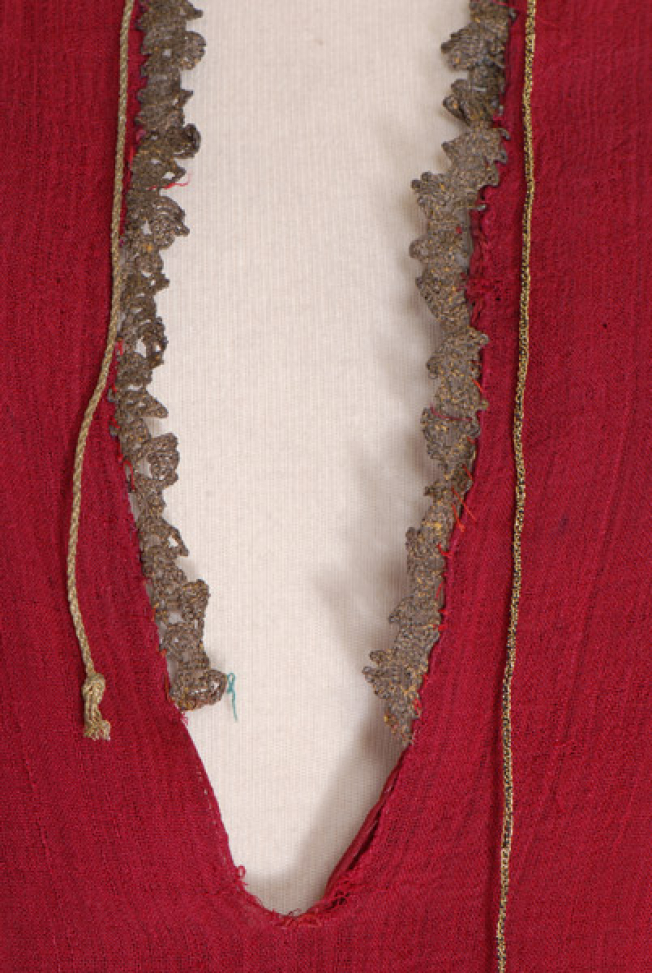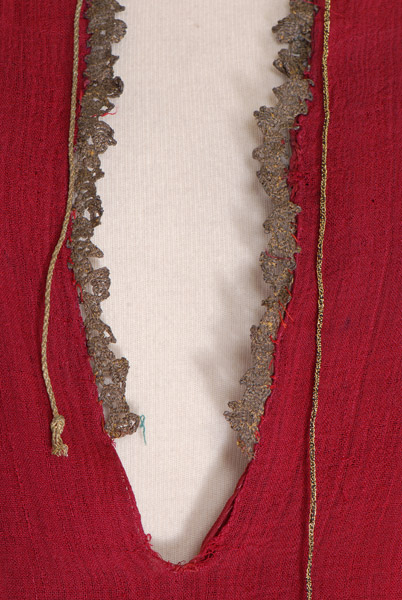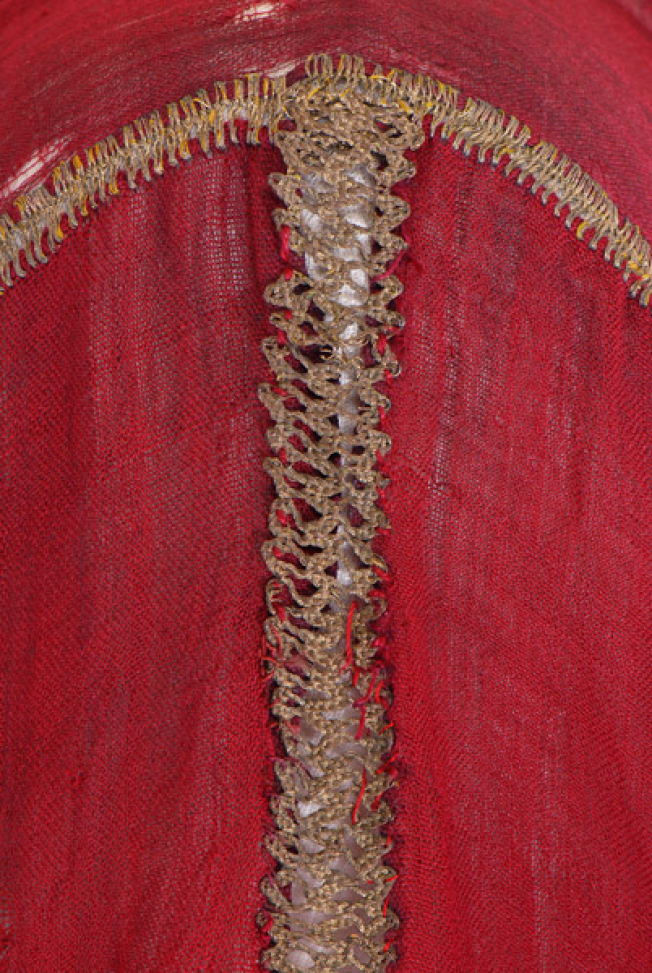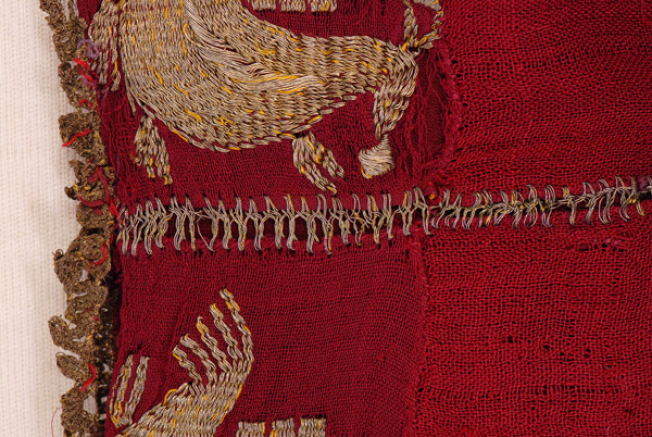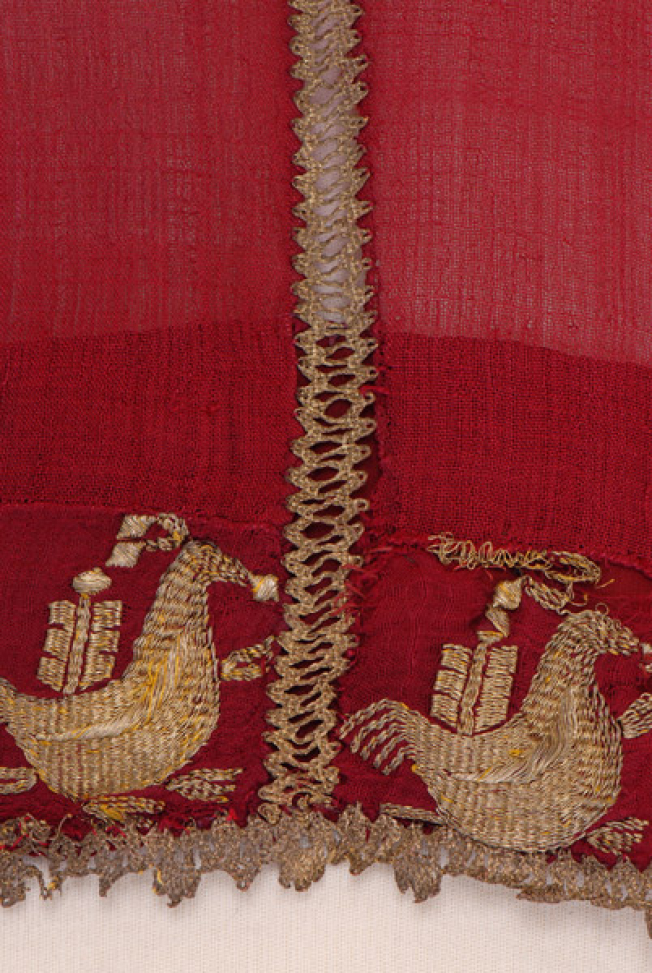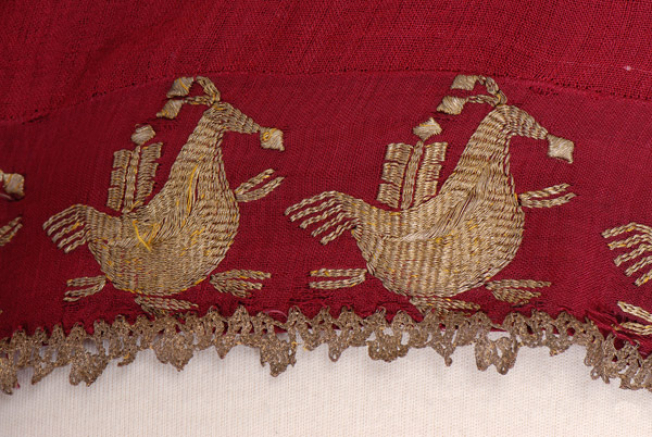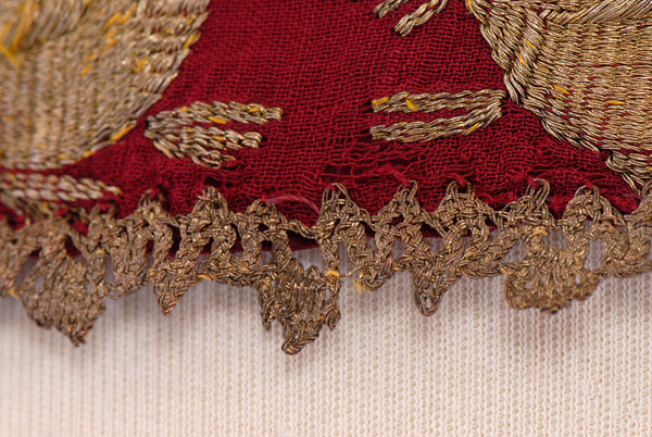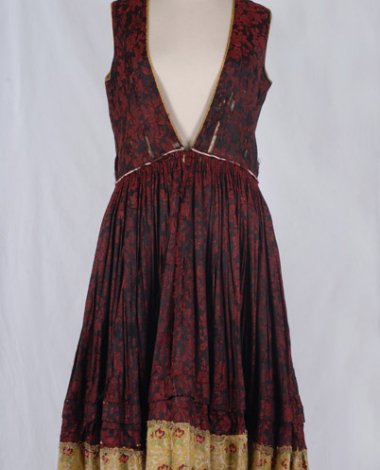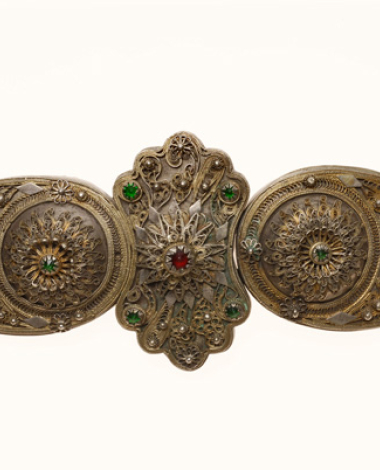chemise
796/1,β
Object Identity
Object ID Number
796/1,β
Object name
chemise
Other / Local name
p'kam'so arkilato or grini
Style
island
Production date range
end of 19th century - beginning of 20th century
Part of outfit
Yes
Physical Description
Description
Αρκιλάτο ή γκρινί π'κάμσ'ο, τρικεριώτικο μεταξωτό ποδήρες πουκάμισο σε βυσσινί χρώμα. Παίρνει την ονομασία του από το χρώμα με το οποίο είναι βαμμένο, καθώς για την παραγωγή του βυσσινί χρησιμοποιούνταν τα αρκέλια, μικρά δεντράκια της θάλασσας. Το πουκάμισο αποτελείται από ένα ενιαίο φύλλο υφάσματος μπρος-πίσω και από τη μέση και κάτω φαρδαίνει με την προσθήκη λαγγιολιών, τριγωνικών φύλλων που ράβονται στο πλάι. Φέρει μπροστά στο στήθος κατακόρυφο άνοιγμα, την τραχηλιά, διακοσμημένη με χρυσή δαντέλα καμωμένη από τις ίδιες τις γυναίκες με χρυσόνημα στον στούμπο, στα κοπανέλια. Με αυτού του είδους τις δαντέλες, γνωστές ως φούντες, γαρνίρονται ο γύρος των μανικιών και ο ποδόγυρος του πουκάμισου. Κατά μήκος των μανικιών, από τον ώμο ως τον καρπό, χρυσή δαντέλα που ενώνει τις
δύο άκρες του υφάσματος έτσι, ώστε το μανίκι να φαίνεται ότι δεν έχει ραφή. Και η δαντέλα αυτή έχει γίνει από τις γυναίκες με χρυσόνημα στα κοπανέλια και ανήκει στην κατηγορία των χρυσών πλεκτών στα κοπανέλια. Στο γύρο των μανικιών δέκα χρυσοκεντημένες πάπιες δουλεμένες με γραφτή τεχνική. Το ίδιο ακριβώς μοτίβο επαναλαμβάνεται και στον ποδόγυρο, όπου αναπτύσσεται ανάμεσα στις τέσσερις δαντελωτές ενώσεις.
Decoration & Patterns
Decoration
zoomorphic decoration
Decorative patterns / subjects
straight ducks
Height
1.400
Width
0.960
Production
Maker / Designer / Brand
women themselves
Production date range
end of 19th century - beginning of 20th century
Production place (Country | Geographic Area | Prefecture & Region)
Greece |
Thessaly |
Magnesia
Trikeri
Material
gold thread
silk
Techniques
crocheted lace,
kopaneli (type of lace)
embroidered band,
merizes
handwoven fabric
industrially woven textile
lacy band,
rintizeles
traced design embroidery,
straight
Use
User
woman
Age
young woman
Status
unmarried woman
Occasion
festive
Date range
end of 19th century - beginning of 20th century
User
woman
Status
newlywed woman
Occasion
festive
Date range
end of 19th century - beginning of 20th century
Place of use (Country | Geographic Area | Prefecture & Region)
Greece |
Thessaly |
Magnesia
Trikeri
Acquisition
Acquisition method
Untraced Find
Documentation
Research bibliographic references
Image license
Use the file or the thumbnail of the image according to the license:
CC BY-NC-ND 4.0
Attribution-NonCommercial-NoDerivatives





